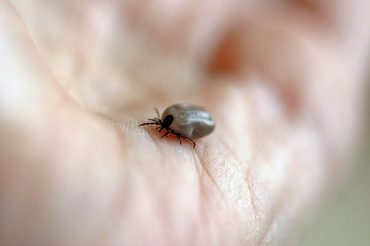

Why are they dangerous?
We all know that we don’t want ticks on ourselves or on our pets because they can spread Lyme disease. We also know they are parasitic little bugs. They latch onto our bodies, burrow their heads under the skin and make residence while feasting on our blood. Unfortunately, this is not the worst that can happen.
Because ticks suck blood and then try to find another host whose blood they can suck again, they can spread all types of blood borne disease. These can include
*Lyme disease. This is the most well known disease spread by ticks. Symptoms include a “bulls-eye” rash, fever and fatigue.
*Rocky Mountain spotted fever. Although named for the Midwestern mountain range, even Floridians can get infected by this disease. It’s characterized by fevers, headaches and vomiting.
*Tick-borne encephalitis. Although initially mostly symptom free, after a week or two the first classic signs of meningitis start to present. These can include fever, headache and a stiff neck.
*Babesiosis. This disease is also mostly symptom free at the onset. If symptoms do show, most people complain of general flu-like symptoms. However, this disease can lead to anemia and/or jaundice.
*Ehrlichiosis Symptoms include fever, muscle aches, headaches and fatigue. This disease is confirmed through a simple blood test.
*STARI. STARI stands for Southern Tick – Associated Rash Illness. Symptoms are very similar to Lyme disease, including the bulls-eye rash. However, the bacterium that causes the disease is different.
*Tick Paralysis. The first symptom is usually an unsteady walking style, which then progresses to numbness or weakness in the lower extremities.
Ticks in Florida
Due to the warmer temperatures, ticks can be found in all year round in Florida. The types of ticks normally found in Florida include the Brown Dog Tick, the Lone Star Tick, the American Dog Tick, and the Gulf Coast Tick.
If you find a tick on you or your pets, your first step would be to remove it. But please do not just grab and pull as this may actually pull the tick body away from the head, leaving the head under your skin. You want to remove the tick so that the head is actually pulled out. You can do this by using tweezers and, while grabbing as much of the head as possible, gently pull until the tick releases you from its bite and you can pull the entire tick out.
If you start to notice a lot of ticks, it is probably time to call an exterminator and have professional treatment done. The risk of getting nasty tick-borne diseases is just too high.
